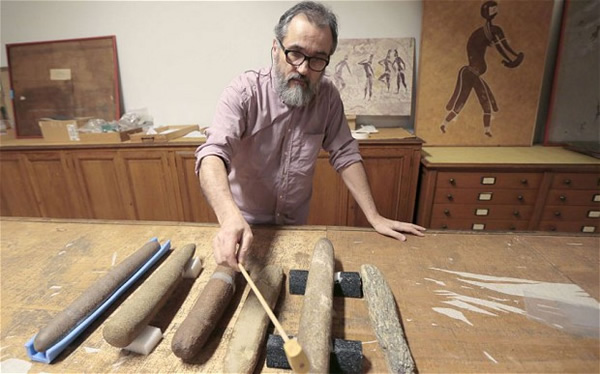
The stone chimes are solid, oblong stones that experts first believed to be pestles or grinders of grain. In 1994, archaeologist Erik Gonthier of the Natural History Museum in Paris happened to tap one with a mallet. Instead of a dull thud, he heard a musical note instead. "I thought back to my grandmother's piano and the small supports which made the strings resonate. I found some packaging foam in the trashcan of the museum, I made two rests that I placed under either end of the lithophone, and tapped it. It made a clear 'tinnnnggg'," Gonthier told the BBC, "My heart beat like crazy. I knew that I had found something great."
It took five years for Gonthier to convince other experts that the stones are actually pre-historic musical instruments. But even Gonthier admitted that there might be other purposes to the stones. "They may also have been used to signal danger, or even to call people to dinner," he said. "They could be heard from kilometers away in the desert or forest."
The French National Orchestra will play the musical piece dubbed "Paleomusique," written by classical composer Philippe Fenelon, only three times to avoid damaging or wearing the instruments down.
Read the rest of the story over at the BBC.

No comments:
Post a Comment